The human mind is incredibly complicated. The way a person thinks and how they perceive the world can be shaped in many unexpected ways. For example, did you know that color can have a huge impact on how you feel and act? It may seem strange, but it is true: the color in your surroundings will have significant psychological effects.
This psychological phenomenon can be turned toward your own purposes. For example, knowledge of how color will affect your thoughts and feelings can be used to help you decorate or redesign your home to improve your mood, boost productivity, or provide some other beneficial effect. Read on for the basics of color psychology, and for how color psychology is important to interior design.
Most colors can be roughly divided into two types: warm colors and cool colors. Warm colors (also called saturated colors), like red, yellow, and orange, evoke feelings of activity and passion, and perhaps even anger. Cool colors are colors such as blue, green, and purple. These cooler colors are associated with calm, harmony, and peace, but also lassitude, inaction, and sadness.
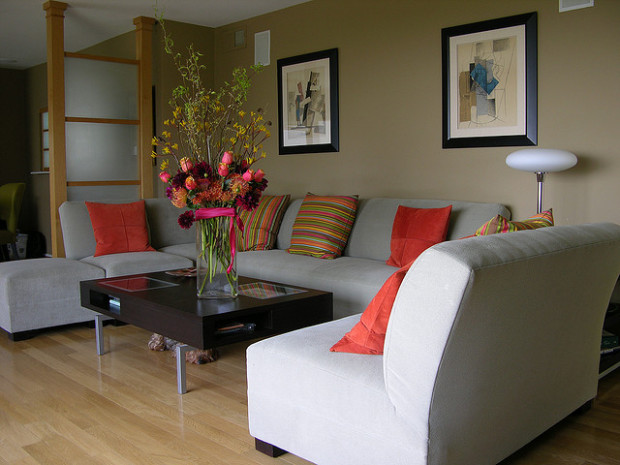
Bright Orange Accents add Spark to the Neutral Setting
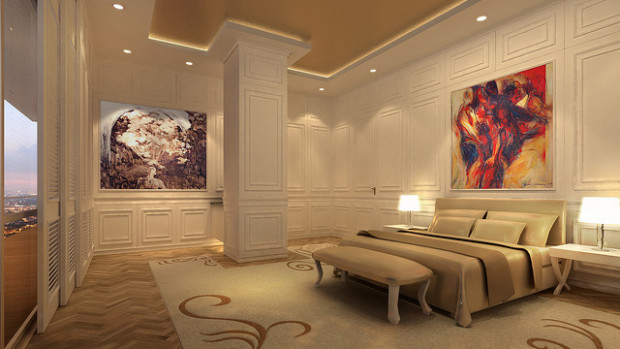
Dramatic Reds Set Off a Subdued Color Palette
Red is certainly the warmest of the colors — in fact it could be called ‘hot’. Red is stimulating and invigorating, but the color can also shorten tempers and increase irritability. Using red in a bedroom (or any room oriented towards relaxation) would probably be unwise. Because it can increase hunger, red might be suitable for a kitchen. Strong reds should be used moderately, since most rooms should not inspire the hectic, intense feeling such reds can elicit.
Bright yellows tend to inspire optimism and foster an upbeat attitude. Still, too much yellow can quickly become grating. Yellow is best used in moderation, or in very light tones. Orange, a fun and stimulating color, should be treated in the same way.
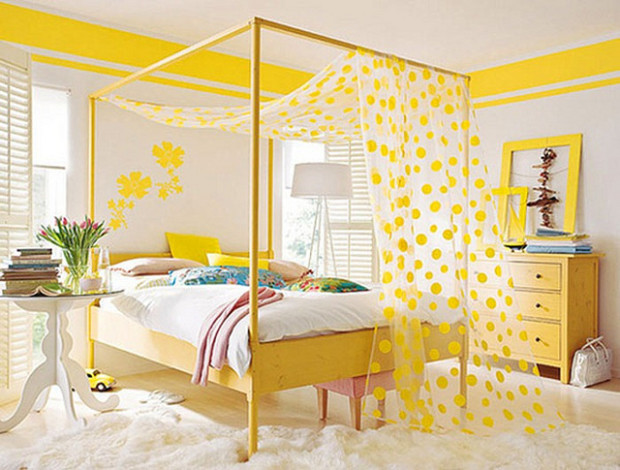
Warm and Cheerful Sunny Yellow
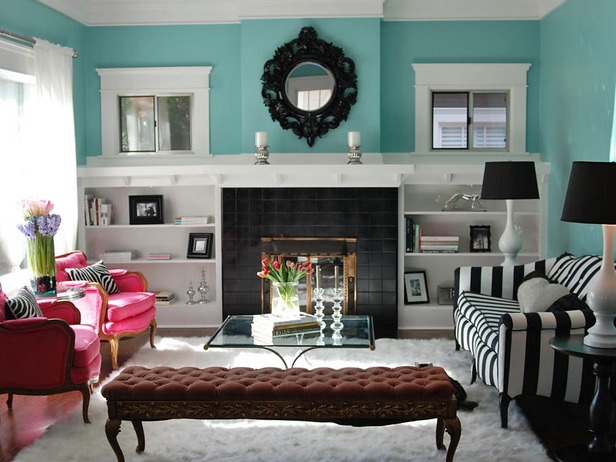
Calming and Restful Shades of Blue
The color blue has many connotations and aspects, but in general it impresses feelings of clarity, order, and calm. Blue is the perfect color for rooms where thinking or hard work are done. The sensation of quiet and peace that blue can impart makes it a good choice for a bedroom, too. Green will have similar effects to blue, though green also has strong associations with the outdoors and the natural world, and provides a slightly more soothing effect than blue. In general, be wary of the downbeat, depressing sentiments blue and green can sometimes evoke.
There’s more to color psychology than warm and cold colors — neutral colors, for one. Neutral colors tend to simply fade into the background and do not have a strong psychological impact. For example, if you walk into a white-colored room, you may not consciously register the color’s presence at all. This phenomenon makes white and other neutrals ideal for rooms used for many different purposes, or for a room where simplicity is needed.
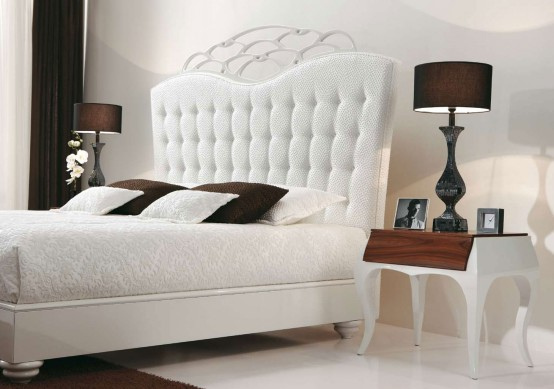
Crisp White is Calm Neutral ….Just a Touch of Brown Enhances Great Style
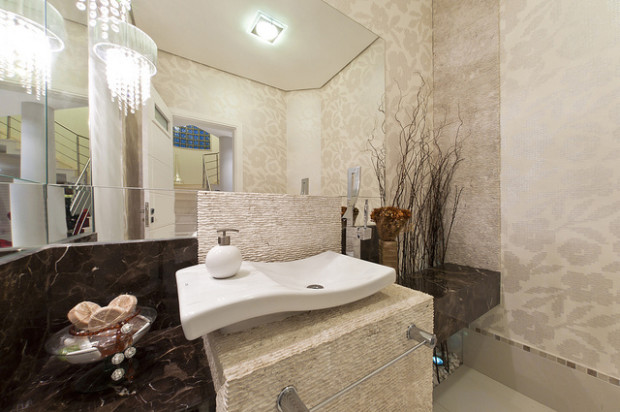
Warm Neutral Elegant Bathroom
Light browns (like beige), creams, and grays are neutral colors as well. Any color that is extremely close to white (i.e., a very pale blue) can also play the part of a neutral. Black, though technically a neutral color, will have somewhat different emotional and psychological effects. Blacks are good for bold, dramatic effects since the color stands out and attracts the eye. Black has certain negative connotations (like with death) and has a weighty, serious aspect, but can also create a mood of refinement and elegance.
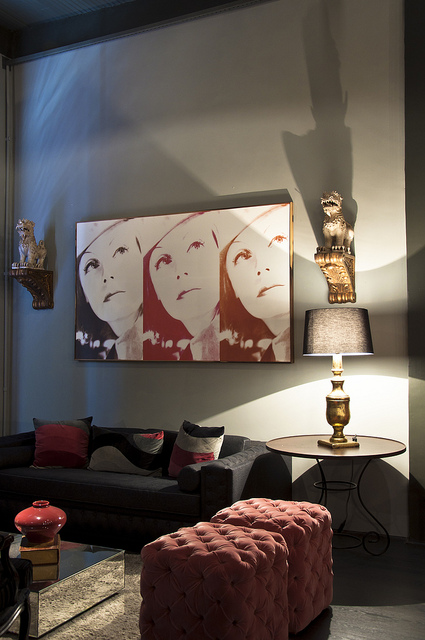
Dark Dramatic Contemporary Color Styling
How light or dark a color is also matters. Darker colors tend to make a room feel compact and small — maybe even cozy. Lighter colors, especially if they are on the cool spectrum, will make a room feel large and airy. You may almost feel as if the walls are receding in a room decorated with a cool blue or the like.
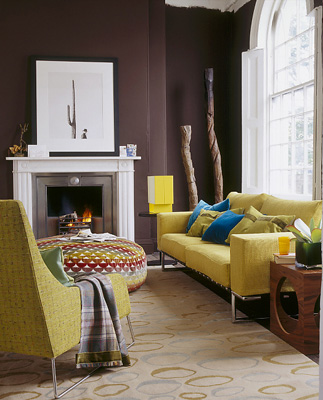
Saturated Dark Walls add Dramatic Effects
Of course, most rooms are not designed with only one color. In fact, making an entire room one color may be unwise. How colors combine can be psychologically significant, and certain sets of colors seem to go perfectly with each other. Nonetheless, for maximum psychological and emotional impact, designing a room with one main color is the best approach — thought slightly moderating the dominance of that color with elements of other, contrasting colors can also be a good idea.
Learning about the psychological and emotional import of color will allow you to design your home in a thoughtful, intentional way. Color can be a powerful way to shape your feelings, mentality, and actions.
Still, it’s important to understand that in color psychology, intuition and personal judgments play a major role. Since there’s no exact science of color psychology, following your own feelings is necessary. The effects a color can theoretically have are almost limitless. If a potential arrangement of colors in your home appeals to you, give it a try. You’ll know by your own experience what emotional and psychological effects the colors actually have. In the meantime, learning from the basic psychological theories of color will give you a good place to start experimenting.


Recent Comments